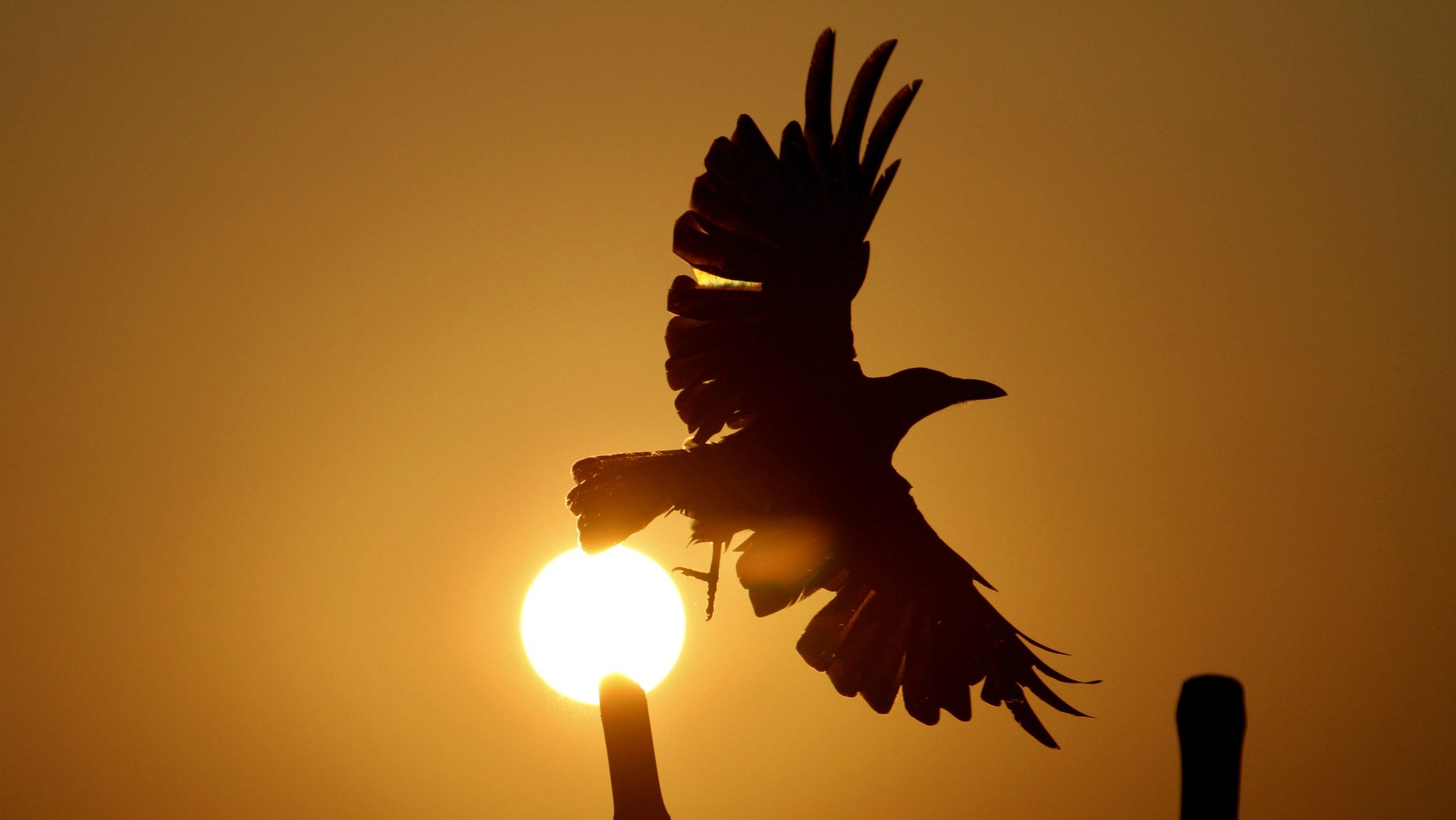Citizen scientists helped researchers discover that crows bully ravens
Thanks to regular people turning their gaze to the sky, researchers can now definitively call out crows for what they are: plumed bullies.


Thanks to regular people turning their gaze to the sky, researchers can now definitively call out crows for what they are: plumed bullies.
Drawing from hundreds of sightings across North America reported by citizen scientists, a new study published this week in the journal Ornithological Advances explores the antagonistic relationship between crows and ravens, two birds weighed down by centuries of heavy mythological baggage, both of which are often found scavenging on the same turf.
While swans and doves have come to represent purity and peace, crows and ravens drew ornithology’s short straw. In Greek lore, the goddess Athena ditched her crow for an owl (crows were too gossipy). Old-world German stories cast ravens as damned souls. And it was a crow that failed Noah, never flapping back to the bobbing ark after being released to let him know the great biblical flood had finally started to recede—the ultimate sign of selfishness.
Still, some of the cultural baggage is undeniably drawn from real-world observation that have echoed throughout history and, indeed, to modern times. Both creatures can be loud and mischievous, and crows have been known to damage seedling corn crops. In the recent study of the relationship between the two birds, crows are the bigger bullies, a behavior intensified by the fact that they often attack ravens in numbers.
The scientists found that of the nearly 2,000 reported sightings of fights, crows were the instigators 98% of the time, and about 70% of the time, the crows were going after ravens in groups.
The attacks peak in the nesting season, when ravens often instigate fights by preying on crows’ nests. But even the rest of the year, fights break out between the two regularly, likely because they have to compete in nature for food.
The average crow is about two to three times smaller than the average raven, so the scientists were intrigued by this rare natural example of David beating Goliath. Often it’s the bigger, stronger animals that triumphs in nature.
The crows’ strength in numbers works to their advantage in that they can expand their access to food by chasing away their main competition. The downside, though, is that once the ravens are chased away by a group of crows, the crows must then compete amongst themselves for the food they just won. As the researchers point out in their study, this is also common among wolves. Larger packs of wolves are less successful at foraging than their smaller-packed peers, according to the study.
Ultimately, crows’ propensity to attack ravens seems to have served them well, and the research has given scientists a look into a largely unexplored aspect of the lives of birds. Perhaps more than anything, though, this work shows how citizen science can help researchers draw a more complete picture of animal behavior, and that these sorts of crowd-sourced data are likely to be used more often
“We anticipate that citizen science data will provide increasingly powerful datasets to test behavioral hypotheses at large…scales,” the study states.